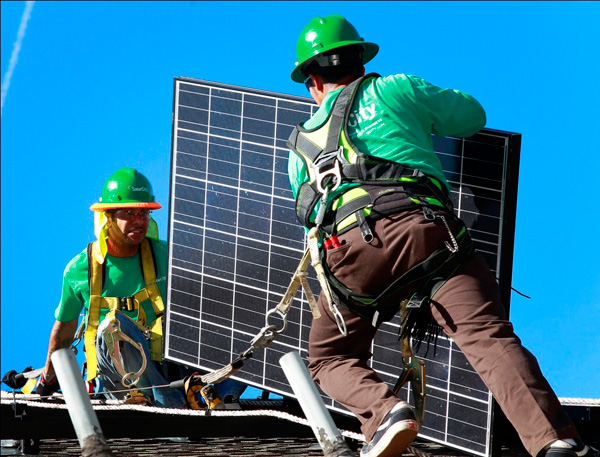India will provide a whopping Rs11,814 ($1.67 billion) crore to support grid-connected rooftop solar in the second phase of the scheme over the next four years. The government aims to achieve a total 40,000 MW of rooftop solar capacity by 2022. ET reported that the Centre aims to add 38,000 MW of capacity with an estimated backing of Rs6,600 crore to achieve 4,000 MW capacity for the residential sector. The report also said the government plans to provide discoms an incentive of Rs4,950 crore ($708 million), apart from Rs66 crore ($9 million) for capacity building and Rs198 crore ($28 million) for service charges.
US Bank: Big solar projects to grow up to 12% for next 2 years
US bank Goldman Sachs has said large-scale solar capacity is expected to grow in the double digits globally in 2019 and 2020. The report said solar power was wiping out the share of fossil fuel from the electricity market as governments and companies are introducing renewable targets. Goldman Sachs said investments by the US, China, Europe and West Asia are going to drive the growth of renewable power. The study expects utility-scale solar to rise by 12% from 2018 to reach to 108 GW in 2019 globally, and increase 10% more in 2020 to 119 GW. Reuters reported that for 2021 and 2022, the bank expected capacity to reach 129 GW and 135 GW respectively.
Cash sops for states to secure land for green power projects
To boost solar power projects, India has announced financial sops for states and eased norms to address issues of shortage of land. States will earn Rs0.02 for every unit of power produced at the solar parks, irrespective of where it is supplied, ET reported.
The move is expected to ease the problem of acquiring private land for wind and solar projects auctioned by the Centre’s Solar Energy Corporation of India (SECI). The Centre has been facing issues over land allocation as states, such as Gujarat, were delaying giving up land but continued leasing it for projects auctioned by its own agency, ET reported. The fiscal incentive of Rs0.02 per unit will have to be borne by the developer, who will be allowed to add it to the tariff while bidding at auctions.
Now, large hydropower projects to also get renewable tag, environmentalists see red
India has announced that even large hydro power projects, with a capacity of over 25 MW, will be classified as renewable energy projects, even as experts consider large-scale hydro power harmful to the environment and livelihoods. Earlier, only smaller under 25MW projects enjoyed the renewable tag. The Centre has launched a separate hydro power purchase obligation (HPO) under non-solar renewable power obligation (RPO). The Economic Times reported that the government launched HPO and tariff rationalisation norms to counter the slowdown in addition to new capacities in the hydro power sector since 2017. Research agency ICRA praised the government’s provision of budgetary support for hydro power saying: “We estimate that these measures are likely to reduce the levelized cost of generation for a 100 MW hydro power project by around 35 paise per unit over its useful life.”
Last week, Germany sourced 65% of electricity production from renewables
Germany is already meeting its target of sourcing 65% of its power usage from renewables by 2040. That’s correct, only last week Germany sourced 64.8% of renewable energy, mostly from wind (48.4%), followed by biomass (7.8%), solar (5.1%) and hydro (3.5%). The biggest economy of Europe, leads the global transition to renewables. If Germany’s nuclear power source of nearly 13% is also added, then its zero emission power sources would touch 77.7%, reported Renew Economy. Germany plans to phase out nuclear energy by 2022, and coal by 2038.
India: Commercial buildings may get mandatory minimum AC temperature limit
India released the India Cooling Action Plan (ICAP), the first of its kind in the world, with a target to control cooling and energy requirements. If implemented, commercial buildings will have to maintain internal temperature between 24-25° Celsius or whatever is finalised in due course as energy-saving target. ET’s analysis of the plan says, “India’s overall cooling requirement (building sector, transportation and refrigeration) will increase by eight times by 2037-38 with room air conditioners alone consuming more than half of the energy required for space (building sector) cooling in India by that time.”
About The Author
You may also like
World, led by China, added 50% more RE capacity in 2023 than in 2022: IEA report
Renewables, not coal, the energy of choice for investors in India for second year in a row: Report
Hope to raise $50 million for solar in next few months; focus on Africa: ISA chief
About 6 lakh new technicians needed globally for wind energy sector by 2027: Report
12% of global growth in solar generation in first half of 2023 came from India: Report


